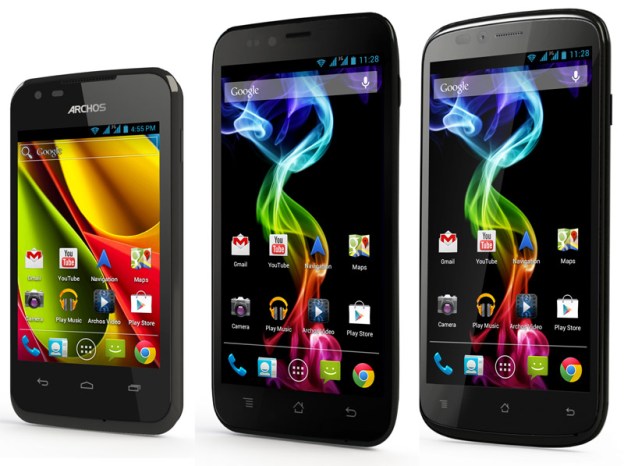
Archos, long a purveyor of Android tablets, announced in a press release today that it will finally release its first line of smartphones, a series of three various-sized devices. The group of phones, which range in price just as much as they do in size, will all run on Android, have IPS (a fancy form of LCD) screens, run on quad-core processors, have 8-megapixel rear-facing cameras, and each will have dual SIM card capabilities, meaning each phone can host two separate phone numbers.
The most affordable, the Archos 35 Carbon, has a 3.5-inch screen, runs on Android 4.0 Ice Cream Sandwich. The next level up, the Archos 50 Platinum, has a 5-inch screen. And the biggest of the bunch, the Archos 53 Platinum, has a slightly larger 5.3-inch screen. The latter two of three run on Android 4.1.2 Jelly Bean, and all three support speeds of up to 3G. No 4G LTE here, sorry.
The lower-end 35 Carbon runs on Qualcomm 7225A at 1GHz, has 512MB RAM, and 4GB ROM. Both the 50 and 53 run on Qualcomm 8225Q quad-core Cortex-A5 at 1.2GHz, have 1GB RAM, and 4GB ROM.
All of the phones, no matter what your budget, won’t burn a hole in your pocket. They’ll run at $100, $220, and $250 respectively. Best of all, they’ll all be unlocked phones, so they should be made available on all major carriers. They’ll first hit the market in Europe by the end of May, and sometime afterward should make their way to the U.S.


